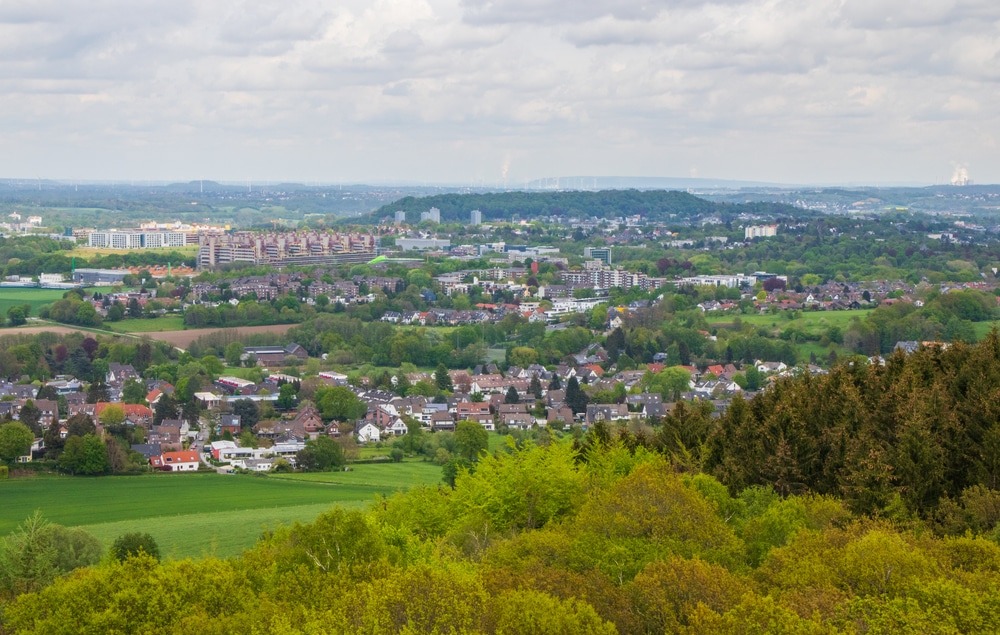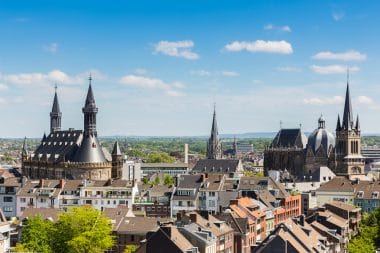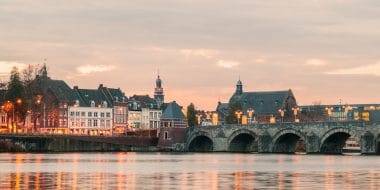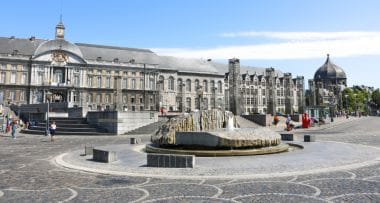
In the far west of Germany, at the outermost tip of North Rhine-Westphalia, lies the border triangle of Germany, the Netherlands and Belgium. Along with the Dreiländermark of Germany, the Czech Republic and Austria , it is the only point in Germany where three national borders on the mainland meet. A trip to the region of the border triangle is therefore like a journey into a melting pot of cultures, because here you can get to know the different languages, customs and people in a very small space.
Thanks to the European freedom of travel, the region can be easily travelled, the national borders are usually only perceived as a sign on the roadside, as there are no longer any controls. The highest point in the Netherlands is located directly on the geographical point of three countries, as well as several observation towers. These guarantee a fantastic panoramic view of the surrounding countries and always inspire visitors of all ages. There are also numerous exciting cities to visit in the region around the border triangle, all of which have their own charm.
The most beautiful cities in the region of the border triangle
When you think of cities in Germany, the Netherlands and Belgium, you often think of the capitals such as Berlin, Rotterdam and Brussels. But great places in the three countries can also be explored with much less distance between them. In the border triangle there are numerous cities and places that are worth a visit at any time due to their culture, history and attitude to life.
Aachen – the vibrant student city

The city of Aachen is one of the westernmost cities of its size in all of Germany and can look back on a long history. The region around the city has been inhabited since the Neolithic Age and, in addition to Stone Age settlements, has also seen a presence of the Romans and lively life in the Middle Ages. Today, the city is home to about 240,000 people. Of these, about 40,000 are students, which gives the city a decidedly young and bright charm. So it is above all the hip bars and cafés that invite you to stop and linger. Among the sights, the Aachen Cathedral is of particular interest. It is the largest sacred building in the city and has received its present form over the course of the last 1200 years. For a time, the impressive building was the coronation church of the German emperors and its Carolingian architecture is now one of the most important architectural monuments on the continent. Aachen Cathedral has been a UNESCO World Heritage Site since 1978. Also worth a visit is the Elisenbrunnen fountain in the centre of the city. The Romans and Charlemagne already appreciated the hot springs that came to light here. Today, the fountain is a popular meeting place for Aachen residents.
Maastricht – Tradition meets modernity

Just a few kilometres from Aachen, in the Dutch province of Limburg, lies the city of Maastricht. If you prefer to leave the car at home, you can even reach the city from Aachen by bus. Just like Aachen, Maastricht is also a university city and is now home to about 120,000 people. Here, too, the influence, creativity and joie de vivre of the young population can be clearly felt and contribute to a relaxing holiday feeling. On the sights side, one of the most beautiful bookstores in the world is particularly worth mentioning.
The bookstore in the Dominican Church is located right in the center of the city and is reminiscent of a magical place with its high vaulted ceilings. There are over 20,000 books in stock here, so bookworms should plan a little more time for the visit. Another good address for all visitors to the city is the Bonnafantenmuseum. The unique architecture of the building alone makes you excited about what will follow inside. This museum exhibits numerous works of modern and contemporary art, but also exhibits from the Middle Ages. The museum café Ipanema serves excellent coffee and cake after the visit.
Liège – the city on the two rivers

The third large city in the border triangle is Liège in Belgium. It is located at the mouth of the two rivers Ort and Meuse and presents an impressive cityscape that is significantly influenced by Masonic architecture. Furthermore, the city has numerous parks and small shopping streets, which make a stroll through the city a varied and relaxing experience. The Prince-Bishop’s Palace is one of the most important sights in the city and combines in its architecture both the Italian Renaissance, the Gothic and an influence of the French style. On the river promenade of the Meuse is the Cortius Palace, one of the most important architectural monuments in Liège.
The bright red façade, complete with a red tiled roof, was built in the 17th century and is easily recognizable from afar. The interior design is also fantastic. The palace now serves as a museum for mainly contemporary art and several hours should be planned for a visit. If you prefer to spend your holiday in nature, the botanical garden of Liège is the right place for you. This park with its huge greenhouses has existed since 1819. In the impressive glass buildings, exhibitions on various topics can be seen, some of which house trees that are up to 150 years old.

